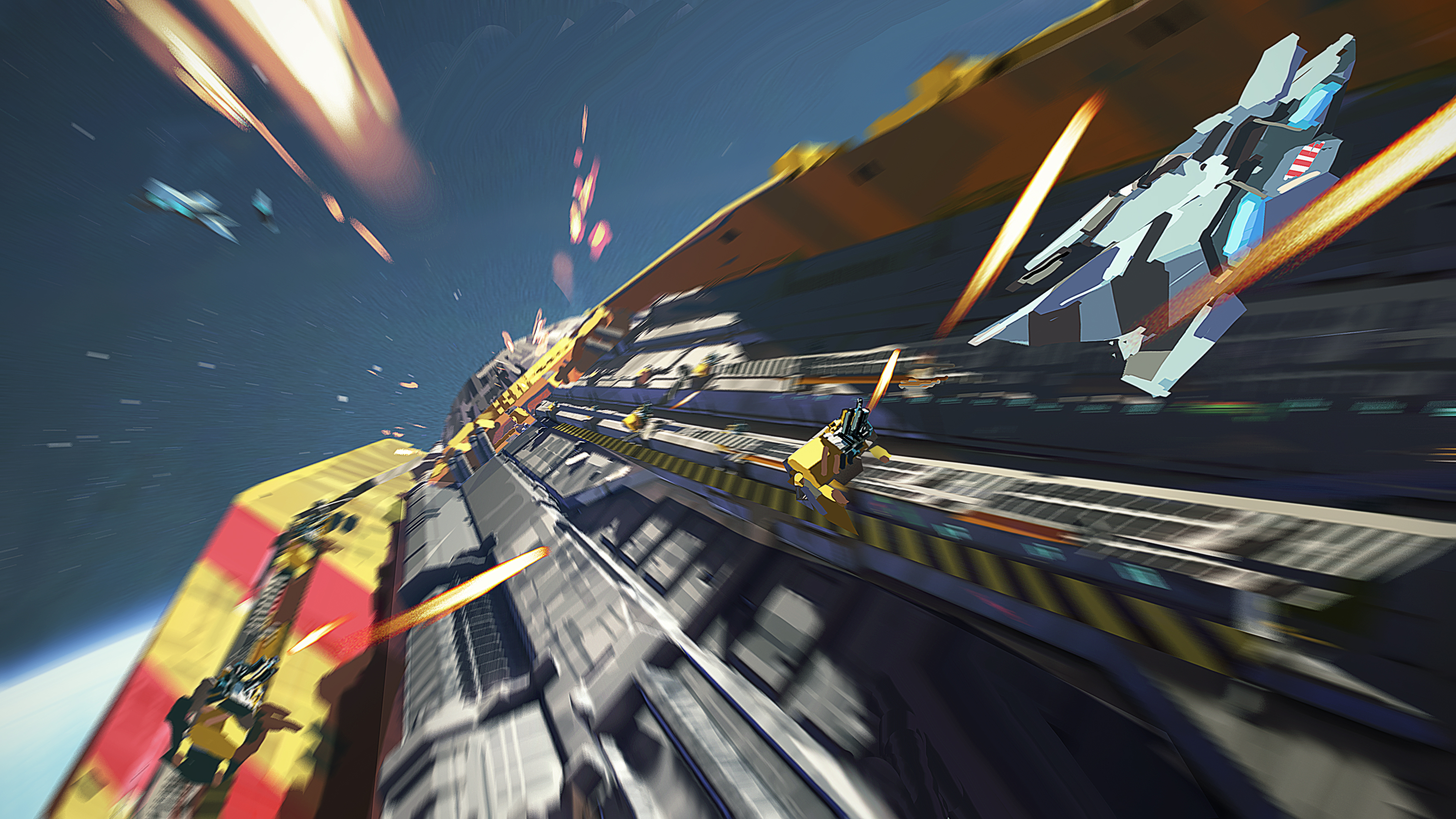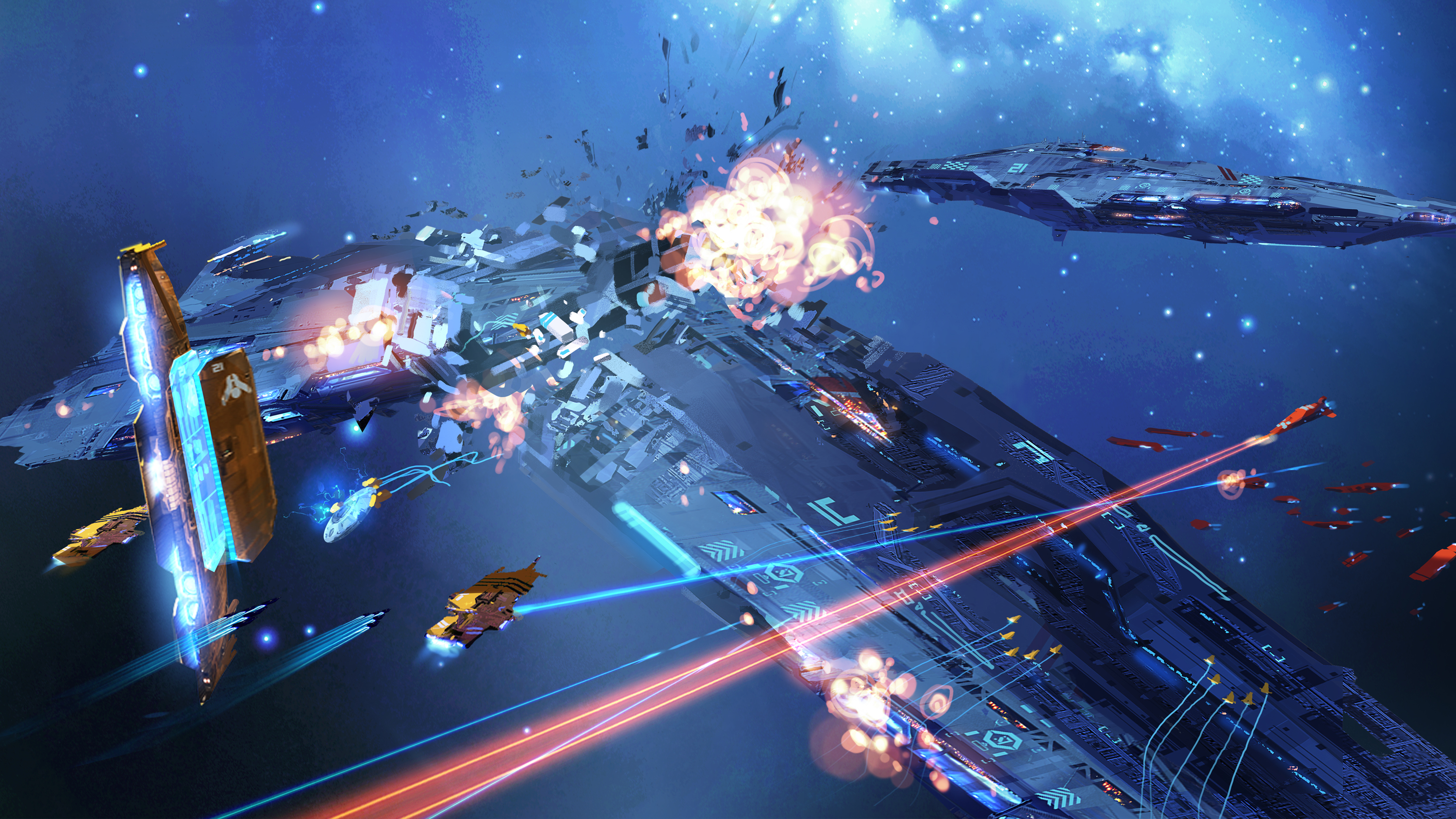Homeworld 3 is Blackbird's ambitious vision for a cinematic sci-fi RTS that was 'utterly impossible to make' 20 years ago
At the PC Gaming Show: Most Wanted, Homeworld 3 locked sights on a final release date: March 8, 2024.
"In essence, Homeworld 3 was our original dream for Homeworld 2," said Rob Cunningham, co-founder of Homeworld 3 developer Blackbird Interactive—and once-upon-a-time co-founder of Relic Entertainment, the developer of the original Homeworld games. Back in 1999 Cunningham was the art director for Homeworld, a fully 3D space RTS that felt unlike anything else in the strategy scene at the time. Relic released a sequel in 2003 that played much like its predecessor, though Cunningham and the rest of the team had greater ambitions than they were able to realize.
"The problem was, in the late '90s, early 2000s, the vision for Homeworld 3 was utterly impossible to make," he said. "We couldn't do massive environments with these megaliths, so we had to wait 20 years."
I visited Blackbird Interactive in Vancouver to speak with the Homeworld 3 team about bringing the series back 20 years later and finally realizing those ambitions, which have landed the new RTS at #8 in the PC Gaming Show: Most Wanted. It now has a finalized release date early next year: March 8. As Cunningham mentions in the video segment above, integrating terrain—big terrain—into combat is one of the game's standout features.
"The problem was the space: there was just so much space," Cunningham remembered of the original game. "There was nothing in there that affected your decision making as a player. We had some asteroids, but that was it. We did our best to make it strategically interesting, but there was really no other decision making happening in the game space, unlike every other strategy game that has terrain with bottlenecks, chokepoints. Immediately we started thinking, 'what can we do about putting terrain in space?'
"We started thinking of these amazing megalithic structures. In some of the backgrounds in Homeworld 1 we painted them into the sky, but they were like dreams in the sky that just couldn't be real. At the time we were thinking very simply: walls, giant flat surfaces with holes in them. We did tons of sketches of Death Star-sized things that would create an interesting landscape for the player to move their units through, gaps the small ships could get through but the big ships couldn't, to make it feel like legit naval battles."

The terrain, from shipwrecks to monoliths to asteroids, serves the practical benefit of giving you something to click on to easily position units without wrapping your head around that tricky Z-axis. But it can also be used strategically in battle to avoid incoming missile volleys or bottleneck enemy ships towards you. Most missions in Homeworld 3's campaign revolve around the environment in some key way: That includes some gorgeous nebulas, like one you'll hide your beleaguered fleet in, Wrath of Khan-style, in an early mission. "When you go into a nebula, the ship understands how much coverage it has, which will affect the concept of fog of war," said technical art director Demetrius Apostolopoulos.
War games
Homeworld 3 is a more macro-focused strategy game than many other RTSes, which is in keeping with the originals. You can put your ships into formations, set them to be neutral or aggressive, and order them to attack—the AI will take care of the rest, with frigates positioning themselves for a bombardment and strikecraft performing strafing runs on capital ships in flying Vs. There's a thematic reason for that, too, which is your role as the fleet commander—you're giving orders, and the calm professionalism of the ships barking back to you largely sets the game's tone.
Keep up to date with the most important stories and the best deals, as picked by the PC Gamer team.
"Homeworld has always been a lower action per minute kind of game," game director Lance Mueller said. "We want to keep it that way. It's more about moving your forces to a point. Your fighter pilots know their job. At the same time, we really want to promote playing at your own pace. With tactical pause you can slow it down, do what you need to do, and then let the game play through. Cinematic combat is also a huge pillar of the franchise: we want you to be able to get in there, find the coolest camera angle, and enjoy the spectacle."
Part of that spectacle comes from the formations you put your ships in—like the claw, which sees fighters spreading outwards from a core of larger vessels. Formations are partially just a cool aesthetic, but Mueller said there are "soft counters" for different formations that more serious players can get into. The composition of ships within a formation will matter, too, though Homeworld 3 is trying to add more nuance here over the older games.

"In Homeworld 1 or 2 you'd need an assault frigate to take out specific fighter units," Mueller said. "In Homeworld 3 we're trying to soften that as much as possible. Terrain will be a big factor in softening counters. When we were designing units we wanted to make sure there's a role for everyone, so you'll have your sniper units, your short range CQB units, and your more tanky get-in-there disruptor units."
Homeworld 3 is also doing something unusual for an RTS: letting you completely remix every unit's role in the sandbox.
In addition to the campaign, Homeworld 3's big new feature is War Games, a co-op roguelike mode that lets you run a set of three missions starting with a premade fleet. As you progress through a War Games run you'll earn artifacts that change the strengths, weaknesses, and abilities of your ships, much like accruing the gods' powers in Hades. Some of these artifacts can change the way ships behave entirely, giving them a different weapon type or sacrificing their typical range in favor of heavier damage. The more you play War Games the more fleet archetypes you'll unlock, too, creating opportunities for co-op players to find compositions that complement one another.
"Early on we knew we wanted to do something that would bring more players into the RTS genre, bring more players into something that's new for Homeworld," Mueller said. "And we wanted to do something that's replayable. We started looking at games in the roguelike genre, and I was really impressed with all the things they've done. We started pulling elements into the RTS. The great thing about Homeworld is it has persistence as a mechanic; from Homeworld 1 to now, [your fleet] persists from mission to mission. And that's a hallmark of a roguelike in general. We wanted to something around that idea in a mode that gives you less to worry about [than campaign], but then gives you all these cool things that let you break the meta and try new elements with."

Though Homeworld in general is more macro-focused strategy, there is more micromanagement than you may expect, in triggering active abilities for different ships that can turn the tide of an engagement. Fragile bombers, for example, can be torn to shreds by an assault frigate's cannons as they close in, but activating their camo ability at the right moment can give them a precious few seconds of safety. Some of the fleets in War Games will emphasize that more hands-on playstyle.
"We're building Homeworld 3 on the rule of thirds," Mueller said. "One third of that game is the game you know and love. One third of it is better. We're improving the UX; we're bringing this game to 2023. It has RTS conventions you know and love and we're making it so that you can choose how you want to play. You can customize the fleet colors, you can modify the controls. And one third is brand new. For us, that's terrain; it's massive, physically and figuratively."
In terms of the campaign, that first third speaks to the continuation of Homeworld 1 & 2's story, picking up generations later. But we'll have more details on the fate of the Hiigarans in a future issue of PC Gamer—and look out for a longer version of our video interview from inside Blackbird Interactive in the coming weeks, too.

Wes has been covering games and hardware for more than 10 years, first at tech sites like The Wirecutter and Tested before joining the PC Gamer team in 2014. Wes plays a little bit of everything, but he'll always jump at the chance to cover emulation and Japanese games.
When he's not obsessively optimizing and re-optimizing a tangle of conveyor belts in Satisfactory (it's really becoming a problem), he's probably playing a 20-year-old Final Fantasy or some opaque ASCII roguelike. With a focus on writing and editing features, he seeks out personal stories and in-depth histories from the corners of PC gaming and its niche communities. 50% pizza by volume (deep dish, to be specific).

